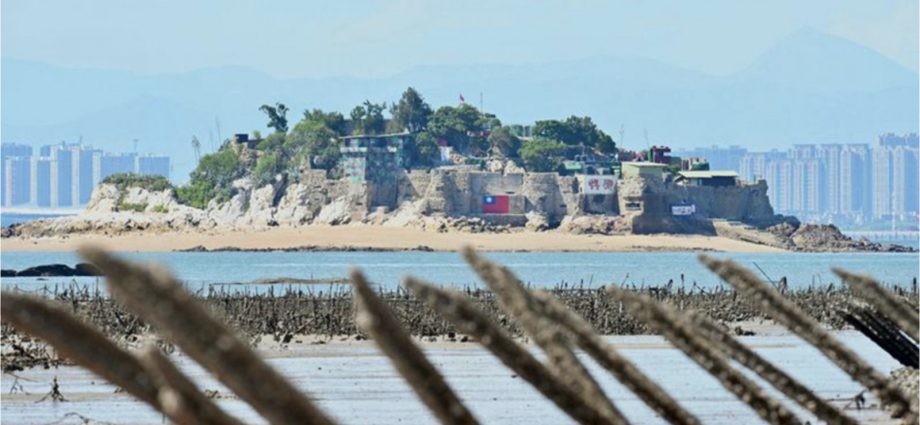The Kinmen Islands, today under Taiwan sovereignty and called Kinmen County, are located just off the coast of China’s Greater Amoy barrier island. You can see the Chinese city of Xiamen from Kinmen, which is little more than a mile away.
The Kinmen Islands have been known in the West by their old Portuguese name, Quemoy. They featured in the 1960 Presidential debates between Richard Nixon (fight for Quemoy and another island group, Matsu) and John F Kennedy (don’t defend Quemoy or Matsu). Kennedy, in the heat of the presidential campaign, would change his view.
In 1949 Mao Zedong launched an amphibious assault on Kinmen. Mao thought his attack would catch Chiang Kai-shek – then encamped on Taiwan with the remnants of the Nationalist army – by surprise and hand him an embarrassing defeat.
The Chinese sent some 200 wooden boats loaded with soldiers and supplies, planning to bring ashore 19,000 soldiers reaching three landing sites: Guningtou, Huwei and Longkou.
Chiang had some 40,000 garrison troops on hand to greet the intruders, but they were lightly equipped with the exception of 22 M5A1 Stuart tanks left over from the fighting in Burma. Some of the tanks could barely move on the sandy soil at the beaches, but even stuck in the sand they put up very heavy counterfire.

Only 9,006 of the troops sent by China made it onto Quemoy. Of these, 3,873 were killed and 5,175 were captured. Whether the others made it back to China or drowned isn’t known.

The battle was a great victory for Taiwan and Chiang and still is celebrated as the Battle of Guningtou.
Thereafter, Kinmen was part of artillery duels with China in what is known as the Second Taiwan Straits Crisis. The shooting lasted for three months and almost triggered a nuclear war against China. (At the time China did not have nuclear weapons.) There are still heavy long-range guns on Kinmen.
Today, Kinmen is peaceful and prosperous, but it is heavily fortified with command centers and supplies deep underground in bedrock. Even the old city hospital, now abandoned, was entirely underground – you would get to it by driving down a steep ramp.

The main island is dotted with spiked traps to snare paratroopers, and emplacements on the beaches to block landing craft.
Kinmen has a civilian airport with a runway capable of handling jet fighters and transport aircraft. West of Taiwan and 187 kilometers (116 miles) distant, it is well within the range of Taiwan’s air force and its small navy.
For the most part, Kinmen is an island of handcrafts, agriculture and superb sorghum liquor called Kaoliang. This is strong stuff – 116 proof – but very enjoyable (in reasonable quantities).
One of the top threats to Taiwan would be a Chinese attack on Kinmen, as it is very close to China and easy prey.

One wonders whether defending Kinmen will be part of the presidential debates leading up to the 2024 Presidential elections. Would Biden support Taiwan if China attacked Kinmen instead of Taiwan? What would Trump do?
Washington should prepare itself if China strikes Kinmen. If it is anything like the last time, it will be a bitter fight. But China is far better equipped today and will move fast. Is the Pentagon ready?
This article first appeared on Stephen Bryen’s Substack page, Weapons and Strategy, and is republished with the kind permission of the author. Read the original here.

